Poison dart frogs are incredibly colorful little creatures that come in a variety of colors and patterns. Famous for their poisonous skin, these unique animals are native to the rainforests of Central and South America. They are equipped with interesting traits, and an interesting history! Read on to learn about the poison dart frog.
Description of the Poison Dart Frog
There are approximately 170 species of frogs considered “poison dart frogs,” and they come in a large variety of shapes, sizes, colors, and patterns. The poisonous species are equipped with bright colors and bold patterns to warn predators of their toxicity, but not all of these frogs are poisonous!
Many species have dull or camouflaged colors, and have little to no toxins in their skin. The color variety ranges from black, brown, tan, and muddy green in the less poisonous, to bright yellow, blue, red, orange, and bright green in the highly toxic species. Their skin can be mottled with solid bars, spots, stripes, and light dapples.
Interesting Facts About the Poison Dart Frog
Dart frogs are beautiful and deadly… but only some species, and only under specific conditions. These incredible creatures are more than bright colors and poisonous skin. Continue reading to learn some fun facts about the poison dart frog.
- Name and History – Poison dart frogs get their name from two sources. The first is their poisonous skin, which is present normally in only brightly colored species. The second is their history. The Indigenous people in the rainforests of Central and South America used some species of dart frogs to coat their blowdarts. By coating the tips of their darts in poison, these people are able to hunt game much more quickly. Surprisingly, only four species of dart frogs are actually used for this purpose.
- Poison Skin – Poison dart frogs’ poisonous skin does not come naturally. In reality, the toxic secretions come from the frogs’ diet of poisonous ants. This means that poison dart frogs kept in zoos are actually not poisonous, because they are not fed poisonous ants. This makes them much safer to handle, without causing any discomfort or danger to the frogs.
- Serious Side Effects – When dart frog skin contains toxins, ingesting or coming in contact with those toxins can be quite dangerous. The poison can cause swelling, muscular paralysis, and severe nausea. Ingesting a poison dart frog can be a deadly mistake for a predator.
- Life Saving Poisons? – Every poisonous species of dart frog has a different chemical makeup to their toxin. Scientists have even found that components of some dart frogs’ secretions can be 200 times more powerful than morphine. They used the secretions of the phantasmal poison frog to create an amazingly effective new painkiller. With many different species, the medical benefits of researching these creatures could be astounding.
Habitat of the Poison Dart Frog
Dart frogs live primarily in rainforests, where there is plenty of moisture for them to access so they can keep their skin wet. These frogs are mostly terrestrial, which means they live on the ground, but there are a few species that live up in the trees. Most species hide and hunt for small prey among the leaf litter on the forest floor, where it is dark and damp.
Distribution of the Poison Dart Frog
Poison dart frogs can be found in tropical, humid environments in Central and South America. They are most commonly found in tropical rainforests. These frogs are native to Nicaragua, Bolivia, Guyana, Costa Rica, Panama, Brazil, Peru, Columbia, French Guiana, Ecuador, Suriname, and Venezuela. They have also been introduced to Hawaii, but they are not a native species.
Diet of the Poison Dart Frog
Poison dart frogs feed upon a number of small insects. Those species that are not highly toxic do not have to prey on specific types of insects, and have a much more varied diet than the more poisonous species. Their most common prey includes ants, termites, small beetles, and centipedes.
Poison Dart Frog and Human Interaction
Indigenous people have used poison dart frogs for decades, and this interaction does not typically hurt the frog. Because the frogs’ poison is exuded from their skin, the darts can simply be wiped on the frog to place the poison. This interaction must be very cautiously performed, as the frogs’ poison is dangerous enough to seriously injure a person.
Unfortunately, like most rainforest species, deforestation poses a major problem for poison dart frogs. Habitat destruction causes population fragmentation and outright decline. These frogs must live in moist environments, and have very specific prey, their survival depends heavily upon the rainforest around them.
Domestication
Poison dart frogs have not been domesticated in any way, but they have been successfully kept and bred in human care.
Does the Poison Dart Frog Make a Good Pet
Actually, yes they can make a great pet. Because their poison comes exclusively from their diet, poison dart frogs can be safely kept as pets. It is important to remember that frogs always require a moist environment, and this will require special care.
Because their skin must remain moist, frequent handling can also harm them. These frogs can make good pets, but only to the right owner.
Poison Dart Frog Care
When keeping poison dart frogs, you will have to ensure they have the correct environment and humidity. Always purchase a captive bred animal, as this will help prevent potential drops in wild populations, as well as keeping you from possibly coming in contact with a poisonous animal.
With younger animals you will need a smaller habitat, so that they can locate prey easier. Once they are larger, they can be moved to a more spacious habitat, like a twenty-gallon aquarium. The temperature should be maintained between 72º F and 80º F, never let the temperature rise above 85º F, as it can be fatal to your frogs.
The humidity should be kept as close to 100% as possible, and never drop below 80% for healthy frogs. The easiest food sources for dart frogs include small crickets and flightless fruit flies, always make sure the prey is not too large for your frogs.
Behavior of the Poison Dart Frog
Poison dart frogs are diurnal, which means they are active during the day. This is quite an unusual trait in frogs, as most species are active at night. Their diurnal activity keeps the frogs from being eaten, because their colors can be best seen in the sunlight.
Dart frogs are quite social animals, and can frequently be found in pairs or small groups. While they live in close proximity, male frogs will wrestle one another for optimal territories, and females will battle over choice egg-laying locations. During courtship, these frogs will caress one another, using their front legs and their chins.
Reproduction of the Poison Dart Frog
Once they have found an acceptable mate, breeding occurs. After mating, the female finds a dark and damp location to lay her eggs. She will lay between 1 and 30 eggs at the base of a bromeliad leaf, in the crook of a tree, in a small puddle, or in a small hole in the bark of a tree.
Both parents must work to protect the eggs from ants, and keep them moist. After hatching, the parents of many species will carry their tadpoles on their backs to a water source.

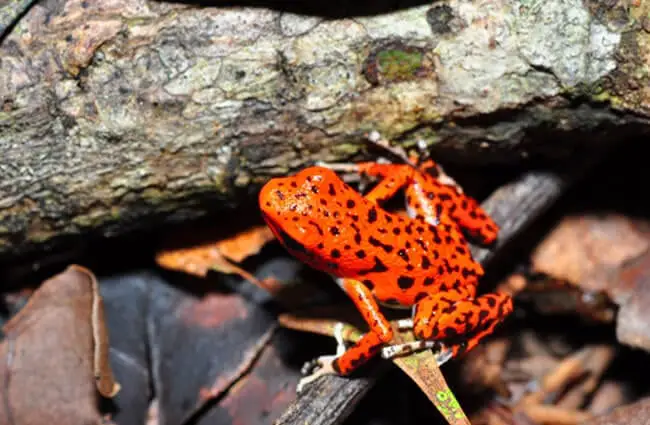


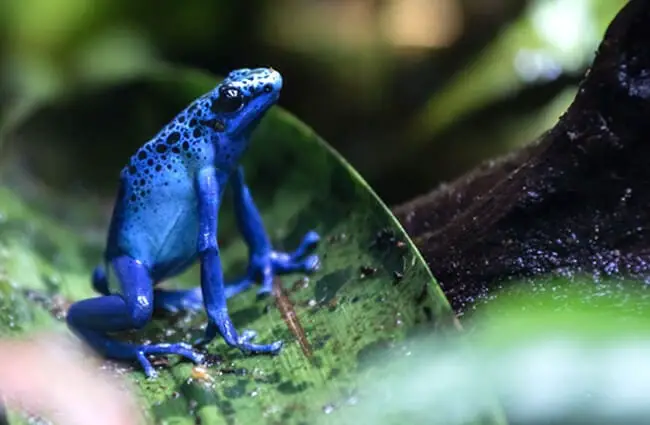
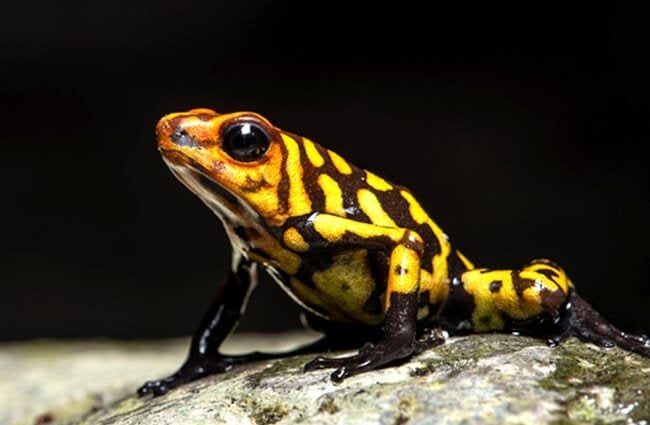
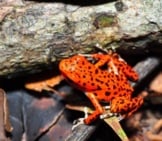


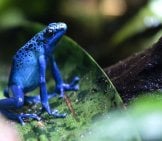

![Red Angus Closeup of a beautiful Red Angus cowPhoto by: U.S. Department of Agriculture [pubic domain]https://creativecommons.org/licenses/by/2.0/](https://animals.net/wp-content/uploads/2020/03/Red-Angus-4-238x178.jpg)


![Red Angus Closeup of a beautiful Red Angus cowPhoto by: U.S. Department of Agriculture [pubic domain]https://creativecommons.org/licenses/by/2.0/](https://animals.net/wp-content/uploads/2020/03/Red-Angus-4-100x75.jpg)

